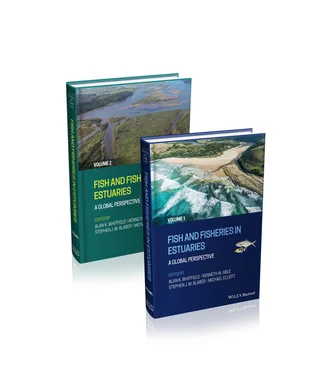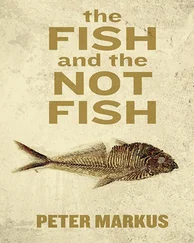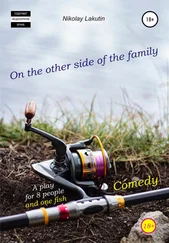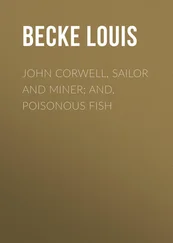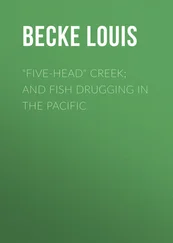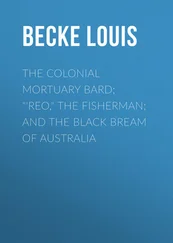30 Arrhenius, F. & Hansson, S. 1996. Growth and seasonal changes in energy content of young Baltic Sea herring (Clupea harengus L.). ICES Journal of Marine Science 53, 792–801.
31 Arula, T., Gröger, J., Ojaveer, H., et al. 2014. Shifts in the spring herring (Clupea harengus membras) larvae and related environment in the eastern Baltic Sea over the past 50 years. PLoS ONE 9, e91304. 10.1371/journal.pone.0091304.
32 Arula, T., Kotta, J., Lankov, A., et al. 2012a. Diet composition and feeding activity of larval spring‐spawning herring: importance of environmental variability. Journal of Sea Research 68, 33–40.
33 Arula, T., Laur, K., Simm, M., et al. 2015. Dual impact of temperature on growth and mortality of marine fish larvae in a shallow estuarine habitat. Estuarine, Coastal and Shelf Science 167, 326–335.
34 Arula, T. Ojaveer, H. & Shpilev, H. 2012b. Individual fecundity of the autumn spawning Baltic herring Clupea harengus membras L. Estonian Journal of Ecology 61, 119–134.
35 Arula T., Raid, T., Shpilev H., et al. 2019. Thermal conditions and spawner demographics determine the spawning cycle of Baltic herring (Clupea harengus m.) in NE of the Baltic Sea. PeerJ. 10.7717/peerj.7345.
36 Arula, T., Raid, T., Simm, M., et al. 2016. Temperature‐driven changes in early life‐history stages influence the Gulf of Riga spring spawning herring (Clupea harengus m.) recruitment abundance. Hydrobiologia 767, 125−135.
37 Arula, T., Shpilev, H., Vetemaa, M., et al. 2017. Maturation at young age and small size of European smelt (Osmerus eperlanus): consequence of population overexploitation or climate change? Helgoland Marine Research. 10.1186/s10152‐017‐0487‐x.
38 Auth, T.D. 2003. Interannual and regional patterns of abundance, growth and feeding ecology of larval bay anchovy (Anchoa mitchilli) in Chesapeake Bay. MSc Thesis, University of Maryland, College Park, USA.
39 Bailey, K.M. & Houde, E.D. 1989. Predation on eggs and larvae of marine fishes and the recruitment problem. Advances in Marine Biology 25, 1–83.
40 Bainbridge, V. & Forsyth, D.C.T. 1971. The feeding of herring larvae in the Clyde. Rapports et Procès‐verbaux des Réunions du Conseil International pour I'Exploration de la Mer 160, 104–113.
41 Baird, D., Christian, R.R., Peterson, C.H., et al. 2004. Consequences of hypoxia on estuarine ecosystem function: energy diversion from consumers to microbes. Ecological Applications 14, 805–822.
42 Baker, R. & Sheaves, M. 2007. Shallow water predation refuge questioned. Marine Ecology Progress Series 349, 13–22.
43 Baker, R. & Sheaves, M. 2009a. Overlooked small and juvenile piscivores dominate shallow‐water estuarine ‘refuges’ in tropical Australia. Estuarine, Coastal and Shelf Science 85, 618–626.
44 Baker, R. & Sheaves, M. 2009b. Refugees or ravenous predators: detecting predation on new recruits to tropical estuarine nurseries. Wetlands Ecology and Management 17, 317–330.
45 Bakun, A. 1996. Patterns in the Ocean: Ocean Processes and Marine Population Dynamics. California Sea Grant, San Diego, USA.
46 Balazik, M.T. & Musick, J.A. 2015. Dual annual spawning races in Atlantic sturgeon. PLoS One 10, e0128234.
47 Balode, M. & Purina, I. 1996. Harmful phytoplankton in the Gulf of Riga (the Baltic Sea). In: Proceedings of the Seventh International Conference on Toxic Phytoplankton (ed., Oshima, Y.T. & Fukuo, Y. ), pp. 69–72. International Oceanographic Commission of UNESCO.
48 Balon, E.K. 1984. Reflections on some decisive events in the early life of fishes. Transactions of the American Fisheries Society 133, 178–185.
49 Balon, E.K. 1990. Epigenesis of an epigeneticist: The development of some alternative concepts on the early ontogeny and evolution of fishes. Guelph Ichthyological Review 1, 1–42.
50 Balouskus, R.G. & Targett, T.E. 2018. Impact of armored shorelines on shore‐zone fish density in a Mid‐Atlantic, USA, estuary: modulation by hypoxia and temperature. Estuaries and Coasts 41, S144–S158.
51 Bannister, R.C.A., Harding, D. & Lockwood, S.J. 1974. Larval mortality and subsequent year class strength in the plaice (Pleuronectes platessa L.). In: The Early Life History of Fish (ed., Blaxter, J.H.S. ), pp. 21–37. Springer‐Verlag, Berlin.
52 Baptista, J., Martinho, F., Dolbeth, M., et al. 2010. Effects of freshwater flow on the fish assemblages of the Mondego Estuary (Portugal): comparison between drought and non‐drought years. Marine and Freshwater Research 61, 490–501.
53 Baptista, V., Leitao, F. Morais, P., et al. 2020. Modelling the ingress of a temperate fish larva into a nursery coastal lagoon. Estuarine, Coastal and Shelf Science 235, 106601. 10.1016/j.ecss.2020.106601.
54 Baptista, V., Morais, P., Cruz, J., et al. 2019. Swimming abilities of temperate pelagic fish larvae prove that they may control their dispersion in coastal areas. Diversity 11, 185. 10.3390/d11100185.
55 Barnthouse, L.W. 2013. Impacts of entrainment and impingement on fish populations: a review of the scientific evidence. Environmental Science & Policy 31, 149–156.
56 Basset, A., Barbone, E., Elliott, M., et al. 2013. A unifying approach to understanding transitional waters: fundamental properties emerging from ecotone ecosystems. Estuarine, Coastal & Shelf Science 132, 5–16.
57 Baumann, H., Hinrichsen, H.‐H., Köster, F.W., et al. 2004. A new retention index for the central Baltic Sea: long‐term hydrodynamic modelling used to study recruitment variability in central Baltic sprat, Sprattus sprattus . International Council for the Exploration of the Sea, ICES CM2004/L:02.
58 Baumann, H., Hinrichsen, H.‐H., Möllmann, C., et al. 2006. Recruitment variability in Baltic Sea sprat (Sprattus sprattus) is tightly coupled to temperature and transport patterns affecting the larval and early juvenile stages. Canadian Journal of Fisheries and Aquatic Sciences 63, 2191–2201.
59 Beasley, C.A. & Hightower, J.E. 2000. Effects of a low‐head dam on the distribution and characteristics of spawning habitat used by striped bass and American shad. Transactions of the American Fisheries Society 129, 1316–1330.
60 Beaulaton, L. & Castelnaud, G. 2005. The efficiency of selective tidal stream transport in glass eel entering the Gironde (France). Bulletin Français de la Pêche et de la Pisciculture 378–379, 5–21.
61 Beck, M.W., Heck Jr., K.L., Able, K.W., et al. 2001. The identification, conservation, and management of estuarine and marine nurseries for fish and invertebrates. Bioscience 51, 633–641.
62 Becker, D.S. 1988. Relationship between sediment character and sex segregation in English sole, Parophrys vetulus . Fishery Bulletin U.S. 86, 517–524.
63 Beckley, L.E. 1984. The ichthyofauna of the Sundays Estuary, South Africa, with particular reference to the juvenile marine component. Estuaries 7, 248–258.
64 Beckley, L.E. 1985. Tidal exchange of ichthyoplankton in the Swartkops Estuary mouth, South Africa. South African Journal of Zoology 20, 15–20.
65 Beckley, L.E. 1986. The ichthyoplankton assemblage of Algoa Bay nearshore region in relation to coastal zone utilization by juvenile fish. South African Journal of Zoology 21, 245–252.
66 Bell, G.W., Witting, D.A. & Able, K.W. 2003. Aspects of metamorphosis and habitat use in the Conger eel, Conger oceanicus . Copeia 2003(3), 544–552.
67 Bell, K.N.I., Cowley, P.D. & Whitfield, A.K. 2001. Seasonality in frequency of marine access to an intermittently open estuary: implications for recruitment strategies. Estuarine, Coastal and Shelf Science 52, 305–325.
68 Bellwood, D.R. & Fisher, R. 2001. Relative swimming speeds in reef fish larvae. Marine Ecology Progress Series 211, 299–303.
69 Bemis, W.E. & Kynard, B. 1997. Sturgeon rivers: an introduction to acipenseriform biogeography and life history. Environmental Biology of Fishes 48, 167–183.
Читать дальше
